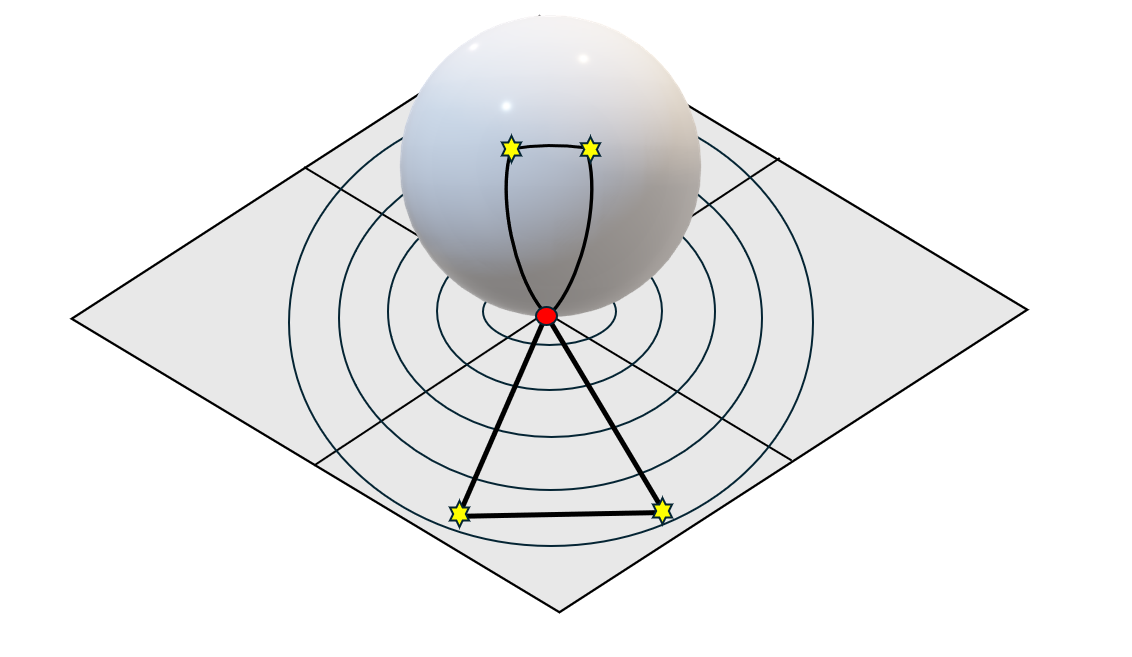Flat Universe Theory Dies.
The presence of Mass and Energy curves Spacetime, yet proponents of the orthodox LCDM Big-Bang Theory continue to insist that the universe has no general curvature and that it remains ‘Flat’ on the grand scale and thus has a Euclidean geometry in which the angles of a triangle summate to 180 degrees, which they claim to have confirmed by measuring the angles between very distant objects considered to have a known distance between them.
The rationale for a ‘Flat’ universe with Euclidian geometry depends on the hypothesis of an expanding universe whose expansion just happens to exactly cancel out the curvature expected from the mass and energy.
In Hypersphere Cosmology the universe does not expand but its overall curvature means that we observe it in Stereographic Projection which leads to a distortion of lengths and angles which will always create an optical illusion of flatness for observers who fail to correct for it.
The mismatch between the cosmological redshifts of distant galaxies (which gives an accurate measure of their distance) and the apparent magnitudes of type 1A Supernovae in those galaxies (which come out far too low making them seem ridiculously further way) provides clear evidence that we observe them in Stereographic Projection, rather than that the universe has undergone a later accelerating expansion driven by an inexplicable ‘dark energy’.
See this: -

This diagram depicts an observer’s position at the red dot and the sphere represents the hypersphere of the universe but with one dimension omitted. The plane represents the sphere of space (but with one dimension omitted) into which a naïve observer will project the positions of distant objects on the basis of the assumption that light travels in ‘straight’ lines.
In/on the hypersphere light travels on the geodesics of spacetime curvature and the triangle formed between the observer and two very distant points plainly has internal angles that summate to more than 180 degrees.
In the observer’s stereographic projection into an imagined surrounding ‘flat’ space the two distant points appear further away and further apart but they do appear to form an ordinary Euclidian triangle.
The situation seems analogous to what happens when we make flat maps of the spherical earth. A triangle formed on the surface of the globe between say New York, London, and the South Pole has internal angles that add up to considerably more than 180 degrees, but on a flat map we can of course draw an ordinary Euclidian triangle joining those three locations, but it doesn’t accurately reflect reality, and neither does Flat Universe Theory.
Distances become distorted by our cosmic stereographic projection and so do the sizes of objects but the size effect usually passes unnoticed, luminous objects at megaparsec distances tend to appear as point sources to us no matter how much magnification we can currently achieve.